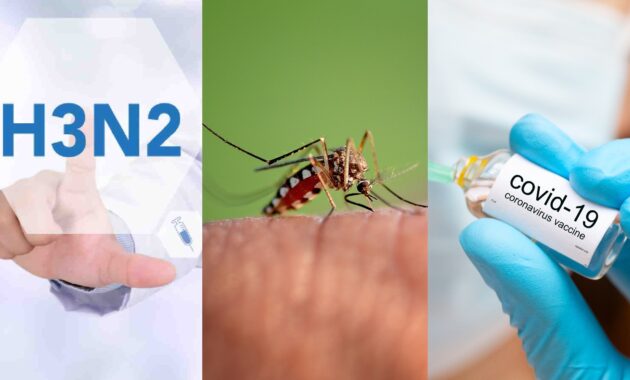Amid the surge in viral flu infections, it can be challenging to distinguish whether the fever and body aches experienced by individuals are caused by Covid-19, H3N2 influenza or mosquito-borne malaria. While Covid-19 is anticipated to be on the verge of turning endemic from the pandemic, the country recently witnessed a huge spike in the cases of Covid and H3N2 influenza as well. Once monsoon will hit the ground, malaria might season out to pose a surging risk in the days ahead. With malaria accounting for approximately 88 percent of all malaria cases in the South-East Asia region in 2019, according to a World Health Organization report, it has been an area of concern for the public health authorities in the country. However, there has been a decline in the number of malaria cases in recent years stated by the same report aids motivation in curbing the menace of malaria.
Despite the different modes of transmission, the primary symptoms of these illnesses are similar, starting with fever and body aches. However, closely monitoring the varying symptoms of these diseases, it will be beneficial to differentiate between Covid-19, H3N2 influenza and malaria.
Covid-19 Vs H3N2 influenza Vs Malaria
Here are the differences between the three health issues:
1. Transmission mode
Malaria is distinct from Covid-19 and H3N2 as it is not transmitted from one individual to another. This is because the Plasmodium parasite that causes malaria is spread via bites from infected female Anopheles mosquitoes. In contrast, the SARS-CoV-2 virus responsible for Covid-19 primarily spreads through respiratory droplets, while the H3N2 influenza virus can spread through both respiratory droplets and contact with contaminated surfaces.

2. Symptoms
Besides some similar symptoms such as fever, headache and body ache, there is also a multitude of symptoms that differs significantly in the case of the three. With malaria, prominent symptoms include chills, muscle pain, nausea and vomiting among others, and if left untreated it can turn severe and debilitating resulting in complications such as anaemia, kidney failure, and cerebral malaria, which can be life-threatening. In the case of Covid-19 and H3N2 influenza, fever, cough, fatigue, sore throat and runny nose are the primary symptoms. However, Covid-19 also presents with additional symptoms such as loss of taste or smell and shortness of breath.
3. Incubation period
The duration of the incubation period plays a crucial role in distinguishing between these illnesses. Covid-19 symptoms usually manifest between 2 to 14 days following exposure, with an average incubation time of 5-6 days. In contrast, the H3N2 flu virus has an incubation period of 1-4 days, whereas the incubation period of malaria can extend from 7 days to multiple months.
4. Treatment methods
The modalities of treating Covid-19, malaria, and H3N2 influenza differ significantly owing to the distinct etiologies of these diseases. Malaria is typically treated with antimalarial medications alongside effective measures to contain mosquito spread. In contrast, Covid-19 necessitates a multi pronged approach including medication, supportive care, and vaccination. On the other hand, H3N2 influenza is managed using antiviral agents along with symptomatic treatment to alleviate fever, cough, and sore throat.

5. Tests that determine the infection
Determining the kind of infection is responsible for similar symptoms from three different diseases, there are distinguished diagnostic tests available. The most commonly used method to detect malaria is the microscopic examination of blood smears, which is based on the detection of the malaria parasite in red blood cells. Alternatively, rapid diagnostic tests that detect malaria antigens in blood samples are widely used due to their ease of use and rapid turnaround time. The diagnosis of H3N2 influenza is typically made using antigen tests that detect the viral antigen in respiratory secretions, while PCR-based assays can provide more accurate results. In contrast, the diagnosis of Covid-19 relies heavily on PCR-based tests that detect viral RNA in respiratory secretions.
The last word
With the continuous emergence of fatal infections affecting numerous lives, discerning between Covid-19, H3N2 influenza and malaria can be challenging due to their overlapping symptoms. However, understanding the transmission modes, distinct symptoms, incubation periods, treatment methods and diagnostic tests can aid in identifying the infection. Most importantly, consulting a doctor the moment these symptoms persist for a certain period of time is essential.
#Covid19 #H3N2 #influenza #Malaria #differentiate
